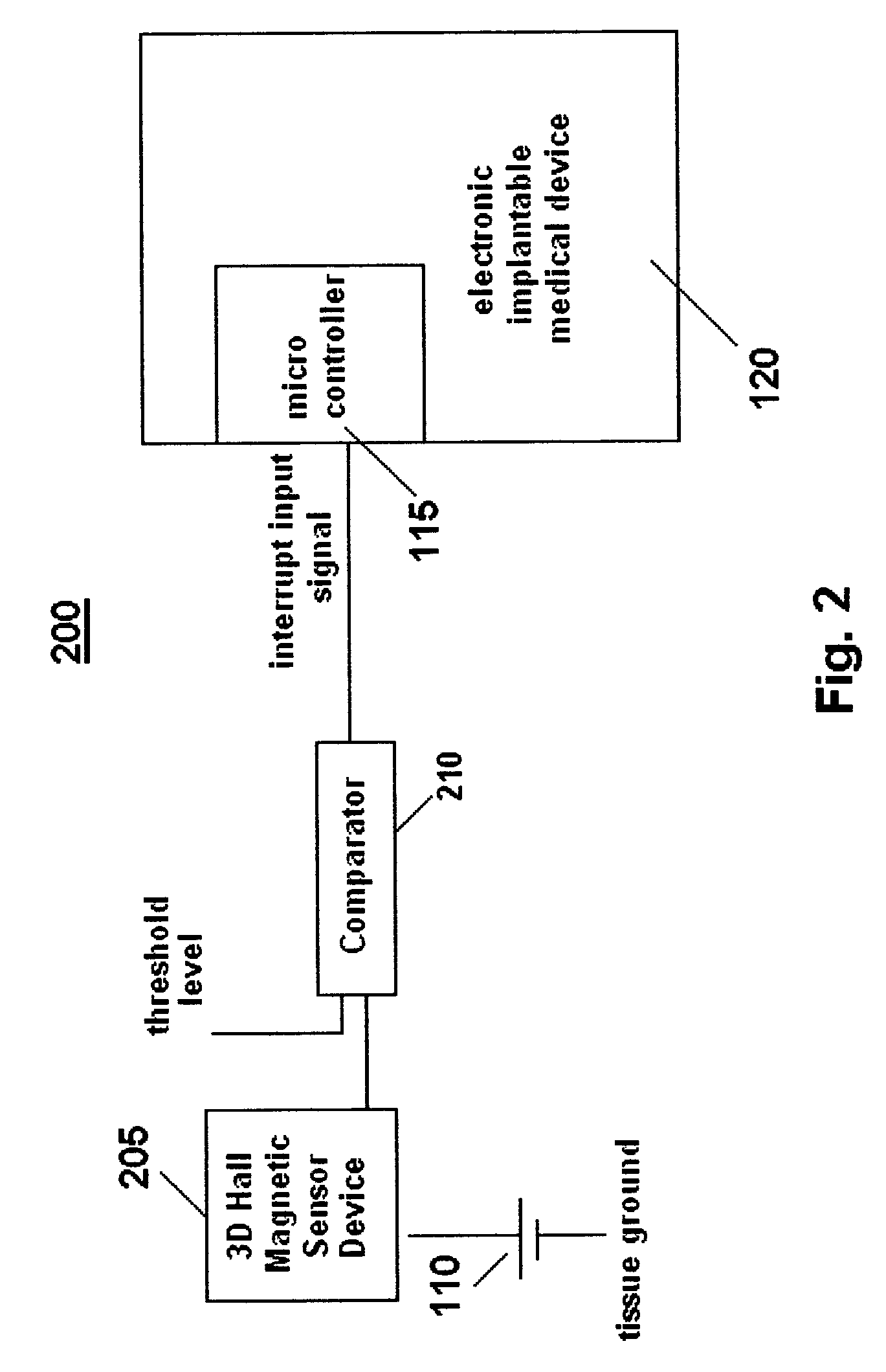System and method for controlling an implantable medical device subject to magnetic field or radio frequency exposure
a magnetic field or radio frequency exposure technology, applied in the field of implantable medical devices, can solve the problems of malfunctioning or disrupting the implanted medical device of a mechanical or electromechanical component, the operation of the motor comprising magnets and coils may be undesirably stopped or altered by the exposure to the magnetic field,
- Summary
- Abstract
- Description
- Claims
- Application Information
AI Technical Summary
Problems solved by technology
Method used
Image
Examples
Embodiment Construction
[0026]An exemplary schematic circuit diagram of a first embodiment of a system 100 for controlling an implantable medical device based on magnetic field exposure in accordance with the present invention is shown in FIG. 1. Although not shown, the system 100 is preferably encased or enclosed in a housing. System 100 includes an electronic implantable medical device 120, for example, a drug delivery device, a pacemaker, a defibrillator, a cochlear implant or a stimulator, that employs an electronic component (e.g., integrated circuits, memory chips or solid state sensors) which may be sensitive to or whose operation may be altered / disrupted in the presence of high intensity magnetic fields, typically between approximately 0.2 T and 3.0 T, generated by an MRI unit. A magnetic field sensor 105 is connected in parallel to a power source (e.g., a battery) 110 and to a microcontroller 115 (e.g., microprocessor) that electronically controls the implantable medical device 120.
[0027]In the em...
PUM
 Login to View More
Login to View More Abstract
Description
Claims
Application Information
 Login to View More
Login to View More - R&D
- Intellectual Property
- Life Sciences
- Materials
- Tech Scout
- Unparalleled Data Quality
- Higher Quality Content
- 60% Fewer Hallucinations
Browse by: Latest US Patents, China's latest patents, Technical Efficacy Thesaurus, Application Domain, Technology Topic, Popular Technical Reports.
© 2025 PatSnap. All rights reserved.Legal|Privacy policy|Modern Slavery Act Transparency Statement|Sitemap|About US| Contact US: help@patsnap.com



